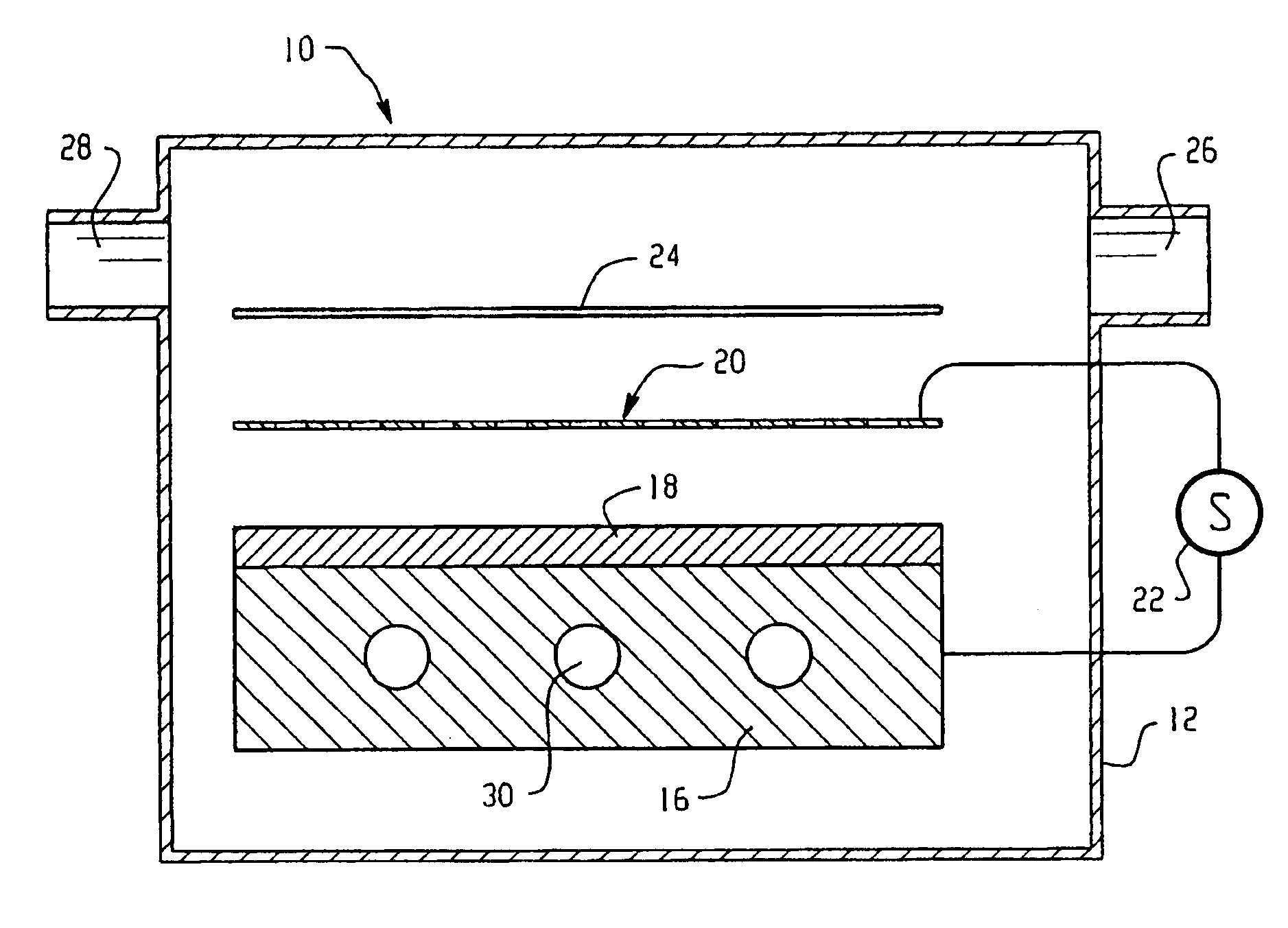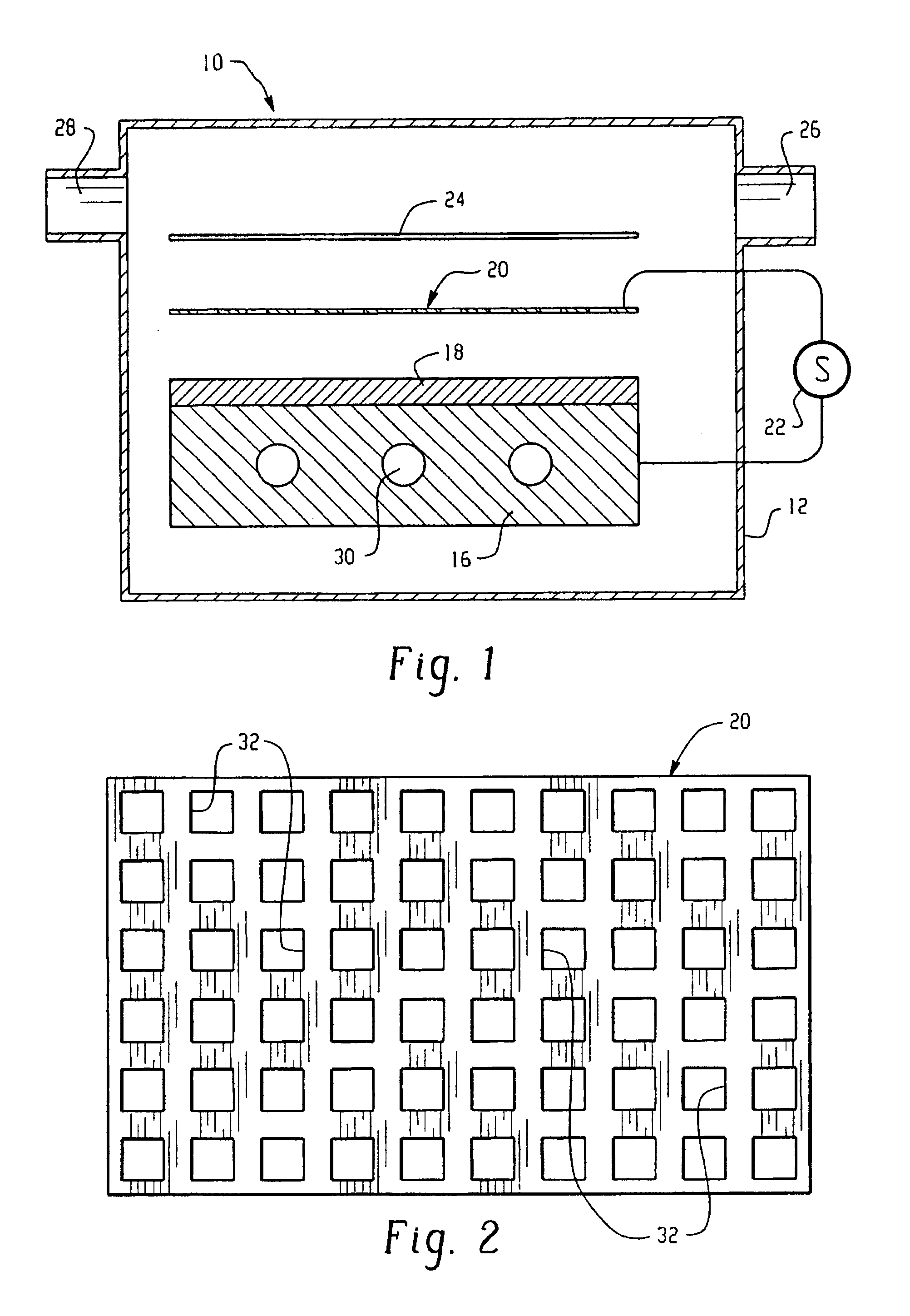Dielectric barrier discharge apparatus and process for treating a substrate
a technology of dielectric barrier and discharge apparatus, which is applied in the direction of electric discharge lamps, chemistry apparatus and processes, plasma techniques, etc., can solve the problems of reducing yield, affecting the quality of substrates, so as to improve the reactivity and the effect of enhancing the ultraviolet production in the discharg
- Summary
- Abstract
- Description
- Claims
- Application Information
AI Technical Summary
Benefits of technology
Problems solved by technology
Method used
Image
Examples
Embodiment Construction
In this example, the apparatus of FIG. 1 was employed to treat a substrate having a 2.4 microns thick photoresist layer coated thereon. The substrate was oriented such that the photoresist layer was facing the screen electrode at a distance of 2 mm from the screen electrode. The distance between the screen electrode and the dielectric layer was 1.6 millimeters. The screen electrode was chosen to have a geometric transmission factor of about 92% and was supported at each corner and held in a parallel plane with the dielectric layer. The dielectric layer was fabricated from a thin sheet of quartz glued to the base electrode, and ground and polished to a final thickness of 0.38 mm. Power input to the electrodes was less than about 25 watts. Ambient air at about atmospheric pressure was introduced into the chamber.
An ozone detector was positioned above the screen electrode during operation in an area unimpeded by the substrate and at a similar distance as the substrate. The ozone detect...
PUM
| Property | Measurement | Unit |
|---|---|---|
| Length | aaaaa | aaaaa |
| Fraction | aaaaa | aaaaa |
| Fraction | aaaaa | aaaaa |
Abstract
Description
Claims
Application Information
 Login to View More
Login to View More - R&D
- Intellectual Property
- Life Sciences
- Materials
- Tech Scout
- Unparalleled Data Quality
- Higher Quality Content
- 60% Fewer Hallucinations
Browse by: Latest US Patents, China's latest patents, Technical Efficacy Thesaurus, Application Domain, Technology Topic, Popular Technical Reports.
© 2025 PatSnap. All rights reserved.Legal|Privacy policy|Modern Slavery Act Transparency Statement|Sitemap|About US| Contact US: help@patsnap.com


